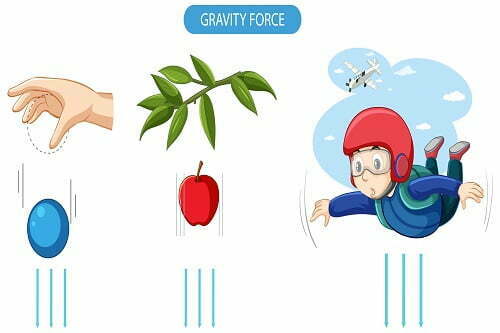Table of Contents
Sir Isaac Newton proposed the Universal Law of Gravitation in 1665 after an apple fell from a tree while he was seated beneath it and hit the ground. He argued that gravity is the force of attraction between any two bodies separated from one other by a distance and that this gave him the concept that all bodies are drawn towards the center of the earth.
This idea was crucial in starting the formation of stars and in determining the universe’s overall structure. It has important current applications in the development of physics.
In this guide, we’ll tell you everything from how Newton came up with his theory to how it has been used throughout history. We’ll also explain the science behind it, so if you’re looking for an explanation of what’s going on under the hood of gravity, this is the place to be.
State the Universal Law of Gravitation

The universal law of gravity is a scientific theory that states that every object in our universe attracts every other object with force. This force is in direct proportion to the product of their individual masses and is inversely proportional to the square of the distance between the two objects. This can be written in formula format:
In the above equation,
- F is the force of gravitation.
- M1 and M2 are the individual masses of two bodies.
- R is the distance between the bodies which are attracted to each other.
This means that when two objects are pulled together, they are governed by the same force as any other object. This happens regardless of their mass or size.
Constant proportionality in the Universal Law of Gravitation
In the law, G is the constant proportionality called the gravitational constant. This means that if you know how far away two objects are from each other, you can determine their relative gravitational force on each other. The value of the gravitational constant is 6.673 x 10^-11 N m2/kg2.
If you have an object with mass m 1 at a distance r 1 from another object with mass m 2. Then, these objects will have a gravitational force of G*m1*m2/r^2 between them.
What are the applications of the Universal Law of Gravitation?

The law explains why things fall, why planets orbit around stars, and why the moon orbits around the earth. But it also has applications beyond these examples. Here are four additional ways you can use this law to better understand and explain the world around you:
Moon’s orbit around the earth
The moon orbits around the earth because of Newton’s Universal Law of Gravitation. It also explains why tides occur when they do—they’re caused by the gravitational forces between earth and moon.
Gravity is stronger than you think
Did you know that gravity is stronger than you think? If an object weighs more than another, it will have more gravitational attraction than a lighter one! So if you dropped two identical objects from a height, they would reach the ground at different times. It depends on how much they weighed.
- You can calculate how fast an object will fall if it’s dropped from a certain height.
- If you’re pulling something heavy up a hill, you can use it to determine how much force you’ll need to pull it up the slope.
Key takeaways
- The universal law of gravitation is one of the most important scientific discoveries ever made.
- It is also one of the most fundamental.
- We cannot understand how our universe works without it.
- One cannot hope to predict what happens next unless we understand how gravity works.
Was this blog informative? If so, please share your thoughts in the comments below. Click here to reach out to us for more information on the Universal Law of Gravitation. We would be happy to assist you with your queries!
Liked this blog? Read: Allied Health Science | Courses, eligibility, universities, career, and more!
FAQs
Q1. What is the G in the universal law of gravitation?
Answer – G is the gravitational constant.
Q2. Who defined the universal law of gravitation?
Answer – Sir Isaac Newton defined the universal law of gravitation.
Q3. In which year did Newton pass the universal law of gravitation?
Answer – The Universal Law Of Gravitation was passed in 1687.






